Precision is key
What do a modern die manufacturing company and a traditional jewelry manufacturer from the early 20th century have in common? The answer is found by taking a look behind the curtains at GEDIA Gebrüder Dingerkus GmbH of Attendorn in the Sauerland region of Germany.
Company
GEDIA Gebrüder Dingerkus GmbH
Location
Attendorn, Sauerland, Germany
Focus
Structural parts and assemblies for lightweight auto body construction and for chassis components
Benefits:
- Precise collision checking with Tebis simulation technology
- Automation with Tebis template technology
- Significant reduction in manufacturing times with end-to-end process chain
Sector
Die manufacturing
Published
2019
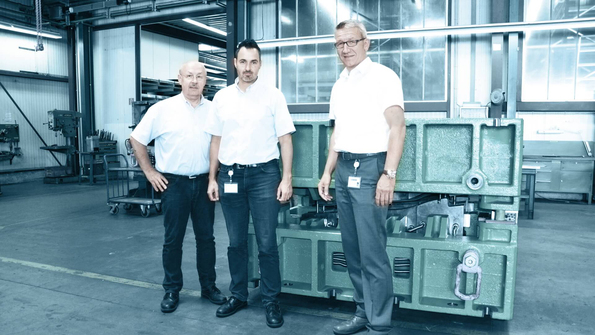
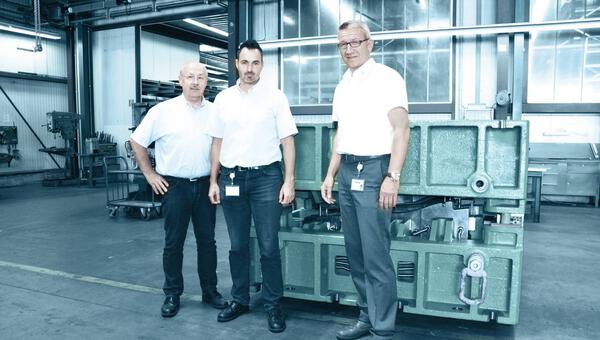
To reduce our collision rate to zero and to simultaneously save time-consuming checking after postprocessing, we used a simulation with millimeter accuracy of the machine model and the tools in the virtual world. Only Tebis was able to do this.
Absolutely reliable collision checking is a must

In order to ensure the reliable collision checking of critical milling areas in the millimeter range or of parts with deep cavities, users must be able to simulate the real manufacturing environment one-to-one in the virtual CAD/CAM world. The CAM system that GEDIA was using prior to 2016 did not have this capability. "The problems started with the milling tool, which could not be precisely simulated," says Ralf Hesener, head of Tool Engineering. "The machine model was also anything but precise, not to mention the kinematics." "This made collision checking extremely time-consuming," adds Carsten Wurm, CAM programming team leader. "In some cases, collisions were displayed that did not even exist. We simply couldn't trust the data and had to maintain it twice – once at the CAM workstation and once at the machine." Finally, when the company decided to acquire a machine with a pallet changer, the decision was made. A new CAM system was needed. Because this required that collision checking also function smoothly in tool changes between two NC programs.
Tebis wins the race
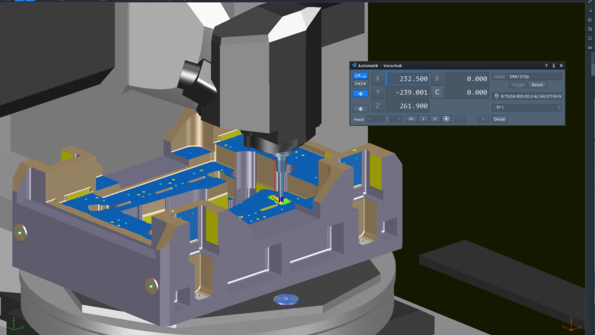
Tebis CAD/CAM software was then compared to the previous system The result: The Tebis CNC simulator ensures that only collision-free NC programs are output. This is made possible by digital process libraries such as the tool and machine library: Virtual copies of all the components accessed by the CNC simulator during checking are stored in these libraries, down to the smallest detail. Hermann Geueke, head of Mechanical Machining, summarizes the requirement and the result: "To reduce our collision rate to zero and to simultaneously save time-consuming checking after postprocessing, we used a simulation of the machine model and the tools – accurate to the millimeter – in the virtual world. Only Tebis was able to do this."
Automation with Tebis template technology
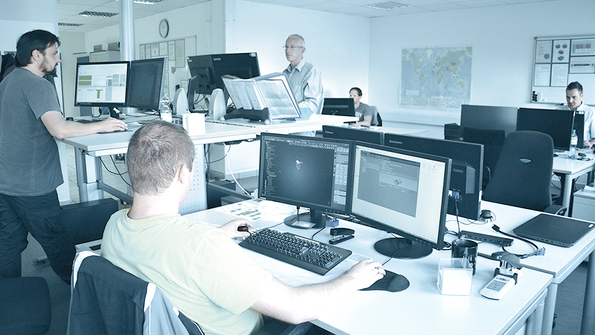
In addition to the precise simulation, GEDIA points out yet another positive aspect of Tebis: the template technology. This enables extensive automation of NC programming. Here too, no other system could compete. GEDIA manufactures primarily in lot sizes of one and therefore has to deal with a large number of variants. As an example, Tebis automatically detects transverse holes in deep-drill machining. With the appropriate NC templates, subsequent NC programming is a breeze. The actual machine run times can also be precisely determined in advance. Wurm sees this as a decisive advantage: "Thanks to the precise calculation of run time in Tebis, we can exchange sister tools completely and automatically during manufacturing. This saves us a lot of time."
Achieve goals quickly with Tebis implementation
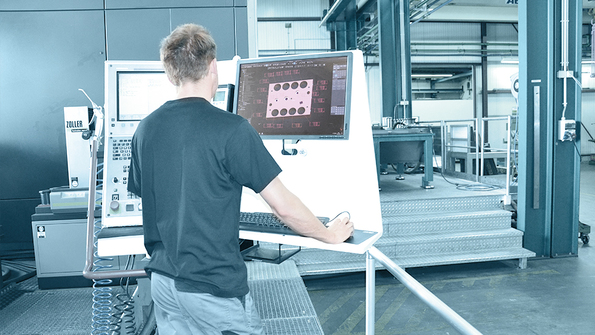
The company started with four licenses in 2016, and added three more in 2018. But there was more to it than simply purchasing licenses. To get the new software up and running as quickly as possible, and to make optimal use of template technology, GEDIA also brought the experts from Tebis Implementation on board. The new system landscape was fully integrated after just 12 months, and programming was then carried out solely with Tebis. It's an end-to-end process right through to the machine shop: The machine operators access all relevant data directly from six viewer stations. They view and process NC functions here. All tools are stored in a separate list with their specific technology parameters. There are now significantly fewer queries than in the past. The entire manufacturing process has become faster. "In the past, we were able to achieve approximately two and a half milling hours in one hour of CAM programming. Today, we are at more than three milling hours," says Hermann Geueke, head of Mechanical Manufacturing. "This means that we produce more parts in the same amount of time. This frees up capacity, enabling us to complete more and more tasks in-house." GEDIA has six Tebis CAM programmers and two external service providers. 18 employees operate the six machines in three shifts. Furthermore, the machines are not idle on weekends – with Tebis, manufacturing can be carried out with less personnel. The agenda for the near future includes multiple-machine operation and automatic palletizing with a zero-point clamping system.
On the road to a single-system strategy
GEDIA has still more plans. Together with Tebis Consulting, the process landscape was analyzed and the degree of standardization thoroughly investigated. At the outset, a workshop was held with all management personnel in order to achieve a common understanding across departmental boundaries and to establish a uniform knowledge base. The Tebis ProLeiS MES solution was also convincing: In the future, orders and manufacturing will be planned and controlled digitally with ProLeiS. In order to reduce reworking and tryout times, the company is currently testing Tebis BREP technologies, which enable pressure and relief areas to be designed directly into the CAD model. There are also plans to further expand the successful GEDIA/Tebis model: The Spanish branch office in Barcelona is already in close contact with Tebis Iberia.


